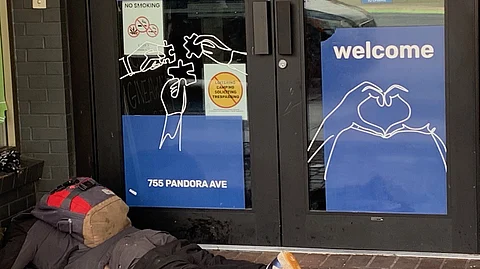

Tom Fletcher grew up in the Peace River region and has covered B.C. politics and business as a journalist since 1984.
There was a bit of Canadian news coverage last week when the Journal of the American Medical Association published a study measuring the results of B.C.’s ongoing “safer supply” and “decriminalization” drug experiment.
Researchers from Memorial University of Newfoundland, the University of Manitoba and Cornell medical school in New York confirmed what many B.C. residents have learned, personally and painfully. Providing free pharmaceutical opioid drugs and removing penalties for possession of small amounts of fentanyl, methamphetamine, cocaine and other illegal drugs does not reduce harm, as advocates insisted it would. It has the opposite effect.
“This cohort study found that neither the safer supply policy nor the subsequent decriminalization of drug possession appeared to alleviate the opioid crisis,” the researchers concluded. “Instead, both were associated with an increase in opioid overdose hospitalizations.”
The “safer supply” hydromorphone pills, known on the street as “dillies,” were being sold or exchanged by the thousands so addicts could get the more potent fentanyl. This fact was ignored or downplayed by B.C. health authorities until police seizures of the diverted pills became too big to deny.
The pills were given out, starting in March 2020. Result: a 33% increase in overdose hospitalizations. Decriminalization was introduced in January 2023. By the end of that year, overdose hospitalizations were up 58%.
The clinical statistics don’t tell the whole story. Some B.C. hospitals have resorted to handing out gas masks to nurses to protect them from clouds of fentanyl or meth smoke they encounter while attempting to treat people in the grip of addiction.
Conservative leader Pierre Poilievre made a campaign swing through B.C. last week. I reached him briefly in Nanaimo, a town that has seen some of the harshest effects of drug addicts gathered in tent camps, and asked about the study results.
“About two years ago I made a video near one of the tent encampments in Vancouver, where I said this policy of decriminalizing and handing out drugs on our streets was a disaster,” Poilievre replied. “The Liberals attacked me mercilessly for it, saying that I was cold-hearted and mean. Well, what was cold-hearted and mean was leaving those people in tent cities, dying of drug overdoses.
“We now know that the radical drug policies of the Liberals have been a deadly disaster. B.C. is perhaps the worst place on Earth for drug overdoses, as a result of radical experiments.”
Liberal leader Mark Carney and NDP leader Jagmeet Singh haven’t had much to say on this subject, that I’ve heard. They haven’t been asked by national media focused on the ever-changing threats of U.S. President Donald Trump. Perhaps the two leader debates will find time for this.
The B.C. government has scrambled to undo some of the worst effects, banning the suddenly legal use of hard drugs in parks and hospitals and around schools. It’s still OK to smoke fentanyl or crack at home, even if your home is a tent on a patch of public property, and recently the ingestion of “safer supply” drugs been required to be witnessed at the dispensing pharmacy.
B.C. Premier David Eby’s government has begun following in the footsteps of Alberta, putting more resources toward treatment options. This week the health ministry announced the reopening of a rural addiction recovery retreat formerly known as Baldy Hughes. It’s located 30 kilometres from Prince George, another B.C. community with entrenched tent camps, converted motels and other supportive housing that make addiction more comfortable rather than treating it.
The Northern B.C. Therapeutic Community offers 25 publicly-funded beds, part of a 180-bed program announced in January and the first new recovery facility outside the urban southwest.
In the federal election, the Conservatives are the only ones I’ve heard promising to do away with the misnamed “safer supply” and decriminalization, as well as closing “safe consumption sites” that meet fierce resistance from communities where they are located. Poilievre’s policy announcement in Nanaimo included mandatory life sentences for people convicted of trafficking more than 40 grams of fentanyl, and he promised to add resources to the provinces for treatment and recovery.
“Detox, counselling, group therapy, physical exercise, yoga, sweat lodges for First Nations, job placement and housing to get people off the streets, out of the tents, into homes,” he said.
When the much-touted “harm reduction” is clearly shown to increase harm to individuals and communities, it’s time to find a new approach.
Tom Fletcher grew up in the Peace River region and has covered B.C. politics and business as a journalist since 1984.
X:@tomfletcherbc
